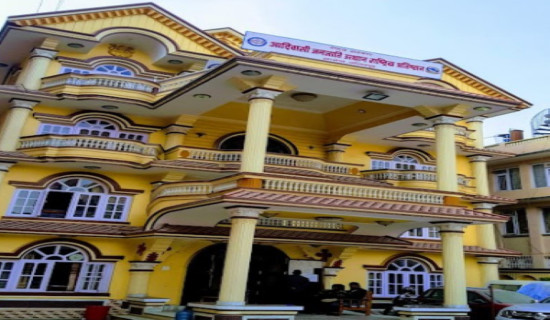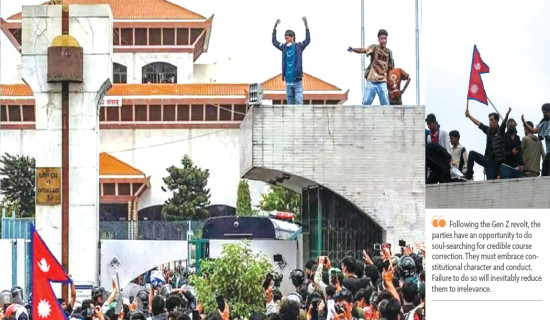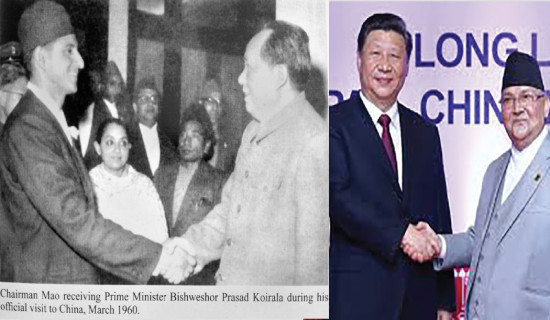- Friday, 9 January 2026
Making Republican System Robust
On May 28, 2008, the first Constituent Assembly (CA) declared Nepal as federal democratic republic, abolishing the 240-year-old monarchy. The new constitution, promulgated by the second CA in 2015, institutionalised the new political and administrative system. The country ushering in a republican state marks a defining moment for Nepalis as they become the sources of supreme power guaranteed by the national charter.
In republican set-up, the head of state or government is an elected leader picked by the people’s representatives. Although we, Nepalis, are proud of being the citizens of a young republic, the idea of republic is quite old and had already been developed as a systematic political theory more than 2300 years ago. It was further popularised and refined during the renaissance in Europe and elsewhere.
The term ‘republic’ is derived from Latin word ‘res publica’ that means ‘public affair.’ Republic is ‘a form of government in which supreme power is held by the people and their elected representatives.’ In fact, the phrase ‘res republica’ is the Latin translation of Greek word ‘politeia.’ The writings of Plato and Aristotle often include the word ‘politeia.’ Plato’s famous book Politeia is known as The Republic in English. Based on dialogic format, The Republic dwells upon the concepts of justice, order and nature of city-states in ancient Greece. Written in about 375 BC, the book has left tremendous impact on modern politics, philosophy, ethics and governance system.
Political awareness
Athens, a prominent city-state, had, for the first time, introduced and experimented with the notion of ‘democracy’ that was a unique governance system in which all citizens barring slave, women and foreigners directly participated in the affairs of the state. This amply suggests that people in the distant past demonstrated their higher level of political understanding and decision-making power. Not only in the West but also in the East there existed republics run by elected representatives. Today around 159 countries out of total 195 identify themselves as republican nations. Nepal joined the clubs of republics in a bid to deepen inclusive democracy by bringing the marginalised classes, communities and regions into the mainstream of politics and development.
Prior to the abolition of monarchy, Nepal was buffeted by multiple crises. Parliamentary democracy became dysfunctional, thanks to the ruthless Maoist insurgency that had brought key state mechanisms and institutions to their knees. There was a parliament and a legitimate government but they were unable to deal with emerging political challenges and chaos triggered by triangle conflict between the then king, the parliamentary parties and the Maoist rebels.
The republican order thrives when the citizens actively participate in political process and the political parties imbibe civic virtues, democratic culture and constitutional behaviour.
Amidst the protracted political tussle, the entire family of king Birendra was massacred on June 1, 2001. It was the biggest bloodbath the country endured after many a carnage that rocked the Himalayan nation before and during the autocratic Rana rule. The royal massacre, which many still consider a conspiratorial move, dealt a death blow to the Shah dynasty. A patriotic and democratic king, Birendra never compromised the national sovereignty, territorial integrity and security during his reign. With his murder allegedly by his own son, the monarchical institution lost its relevance in Nepal.
Gyanendra, who became king by default, could have saved the monarchical institution and revived the people’s faith in it had he not seized power through a bloodless coup and imposed autocratic rule on the people. He tried to turn back the cloak of history. His anachronistic and dictatorial rule alienated the people. The 2006 April Uprising forced the discredited monarchy to bow down before the people’s power. The House of Representatives (HoR), reinstated by his own decree, suspended him until the historic CA put the final nail in the coffin of the monarchy through the voting of an overwhelming number of its members.
There are analysts who blame the external factors behind the end of kingship in Nepal. But internal reasons had played a critical role in putting an end to the Shah dynasty that dug its own grave by crushing the people’s democratic aspirations and rights. Moreover, it ditched the wise suggestions and ideas of its own forebear and father of nation - Prithvi Narayan Shah, who said: Praja mota bhaya, durbar baliya hunchha (If the subjects are rich, the palace will be stronger). Gyanendra refused to honour popular voice, which was the driving force behind Prithvi Narayan Shah’s successful unification campaign. In his Dibya Updesh (divine counsel), he has offered pragmatic vision of statecraft, calling for economic nationalism, cultural pluralism, neutral foreign policy and robust defence system essential for protection of sovereignty, unity and prosperity of the newly created Nepali nation state.
The new constitution has transformed the country into republican, federal and secular democratic state. In the republican set-up, the state is considered as ‘public matter,’ not the private property of the rulers. It is guided by the popular sovereignty expressed through the periodic elections. The preamble of the constitution states: “We, the people of Nepal, in exercise of the sovereign powers inherent in us, embracing the sovereign right of the people and the right to autonomy and self-rule.”
Inclusion
Our constitution is the most comprehensive and progressive document that the country has ever got. It envisions a mixed electoral system – first-past-the-post and proportional representation – to ensure the representation of people from the diverse segments of society in the organs of state. It contains oodles of fundamental rights of citizens and several provisions to bolster inclusive and participatory democracy. The three-tier of governance system has decentralised powers, seeking to enhance the people’s access to resources, rights and opportunities. As a shared and self-rule, federalism forms the key pillar of republican dispensation, which deepens the bottom-up process of democracy.
The second local elections, held under this constitution, have further consolidated the republican set-up. Through their ballots, the people have made informed and wise decision, giving a clear message to the political parties for their reform and democratisation. The republican order thrives when the citizens actively participate in political process and the political parties imbibe civic virtues, democratic culture and constitutional behaviour.
(The writer is Deputy Executive Editor of this daily.)

















